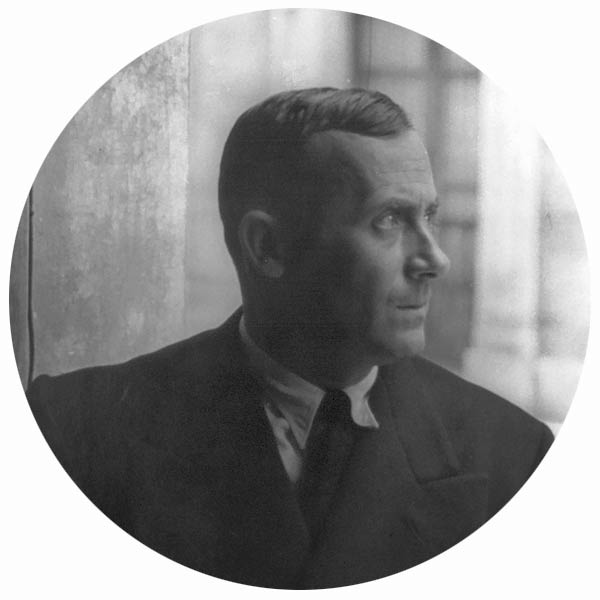
Joan Miró was born in Spain in 1893 to a family of craftsmen. His father was a watchmaker and goldsmith and his grandfathers were cabinetmakers and blacksmiths. Perhaps in keeping with his family’s artistic trade, Miró exhibited a strong love of drawing at an early age; according to biographers, he was not particularly inclined toward academics. Rather, Miró pursued art-making and studied landscape and decorative art at the School of Industrial and Fine Arts (the Llotja) in Barcelona.
Despite his desire for a career in the arts, Miró attended the School of Commerce from 1907-10. His relatively brief foray into the business world instilled a strong sense of order and a robust work ethic in Miró but at a very high cost. After what has been characterized as a nervous breakdown, Miró abandoned his business career and subsequently devoted himself fully to making art.
In 1912, Miró enrolled in an art academy in Barcelona where he learnt about modern art movements in Western Europe and was introduced to contemporary Catalan poets. Miró was also encouraged to go out into the countryside to paint. Between 1912 and 1920, Miró painted still-lifes, nudes, and landscapes. His style during this period in his early career has been referred to as “poetic realism.” It was during this phase of his career that Miró developed an interest in the bold, bright colors of the French Fauve painters and the fractured compositions of the Cubists.
Miró moved to Paris in 1919 to pursue his artistic development. Due to considerable financial hardship, his life in Paris was difficult at first. Here is what he said about his first years in Paris: “How did I think up my drawings and my ideas for painting? Well, I’d come home to my Paris studio in Rue Blomet at night, I’d go to bed, and sometimes I hadn’t had any supper.” Physical deprivation might enlivened the young Miró’s imagination. “I saw things,” he explained, “and I jotted them down in a notebook. I saw shapes on the ceiling…”
Miró was drawn to the Dada and Surrealist movements. He became friends with André Breton who was leading the Surrealist movement. Miró’s art manifested these dream-like qualities, becoming increasingly biomorphic, enigmatic, and innovative. Miró’s first solo show in Paris in 1921 was a disaster: he did not sell a single work. However, a determined Miró went on to participate in the first Surrealist exhibition in 1925. He collaborated with the group’s members in the creation of larger commissions, working with Max Ernst in 1926 on the creation of Sergei Diaghilev’s ballet set designs. In his own work at the time, Miró painted fantastic and bizarre interpretations of his dreams.
Miró married Pilar Juncosa in 1929, and their only child, Dolores, was born in 1931. His career flourished during this time. In 1934, Miró’s art began to be exhibited in both France and the United States. He was living in Paris when war broke out in Europe, and in 1941 Miró was forced to flee to Mallorca with his family. Perhaps not surprisingly, warfare and political tension were prominent themes in his art during this period; his canvases became increasingly grotesque and brutal. Concurrently, Miró’s first retrospective was held at the MoMA in New York City and it was a total success. His renown continued to grow both in America and Europe, culminating in a large-scale mural commission in Cincinnati in 1947. Miró’s simplified forms and his life-long impulse toward experimentation inspired a generation of American artists, the Abstract Expressionists, whose emphasis on non-representational art signaled a major shift in artistic production in the U.S.
In the 1950s, Miró began dividing his time between Spain and France. A large exhibition of 60 of Miró’s works was held at the Gallerie Maeght in Paris and subsequently at the Pierre Matisse Gallery in New York in 1953. By the mid-1950s, Miró had begun working on a much larger scale, both on canvas and in ceramics. In 1959, Miró along with Salvador Dalí, Enrique Tabara, and Eugenio Granell participated in Homage to Surrealism, an exhibition in Spain organized by André Breton. The 1960s were a prolific and adventurous time for Miró as he continued to break away from his own patterns, in some instances revisiting and reinterpreting some of his older works. While he never altered the essence of his style, his later work is recognized as more mature, distilled, and refined in terms of form.
In 1974, he was commissioned to create a tapestry for New York’s World Trade Center, demonstrating his achievements as an internationally renowned artist as well as his place in popular culture. He received an honorary degree from the University of Barcelona in 1979. Miró died at his home in 1983, a year after completing “Woman and Bird”, a grand public sculpture for the city of Barcelona; the work was, in a sense, the culmination of a prolific career so profoundly integral to the development of Modern art.